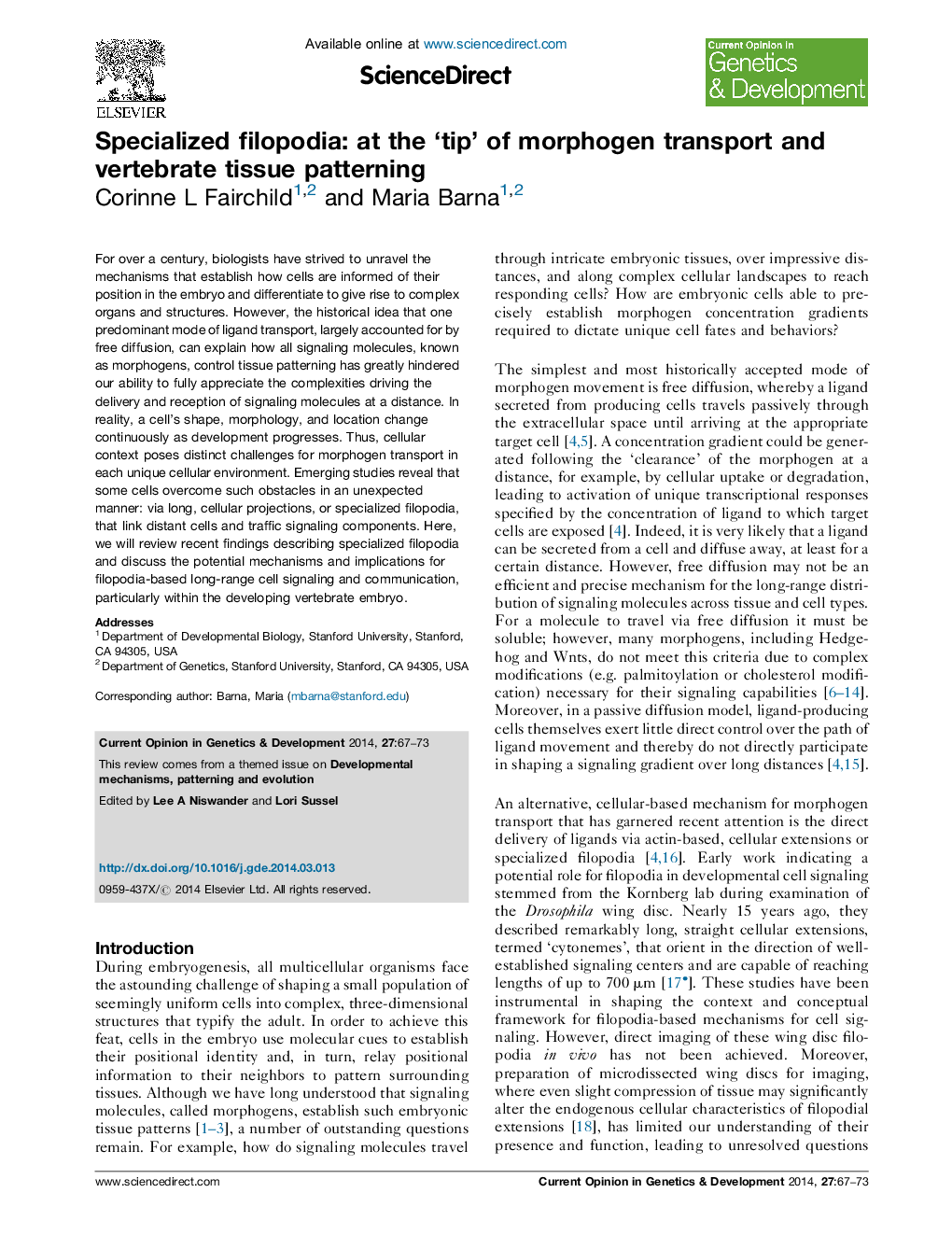| Article ID | Journal | Published Year | Pages | File Type |
|---|---|---|---|---|
| 5893460 | Current Opinion in Genetics & Development | 2014 | 7 Pages |
Abstract
For over a century, biologists have strived to unravel the mechanisms that establish how cells are informed of their position in the embryo and differentiate to give rise to complex organs and structures. However, the historical idea that one predominant mode of ligand transport, largely accounted for by free diffusion, can explain how all signaling molecules, known as morphogens, control tissue patterning has greatly hindered our ability to fully appreciate the complexities driving the delivery and reception of signaling molecules at a distance. In reality, a cell's shape, morphology, and location change continuously as development progresses. Thus, cellular context poses distinct challenges for morphogen transport in each unique cellular environment. Emerging studies reveal that some cells overcome such obstacles in an unexpected manner: via long, cellular projections, or specialized filopodia, that link distant cells and traffic signaling components. Here, we will review recent findings describing specialized filopodia and discuss the potential mechanisms and implications for filopodia-based long-range cell signaling and communication, particularly within the developing vertebrate embryo.
Related Topics
Life Sciences
Biochemistry, Genetics and Molecular Biology
Developmental Biology
Authors
Corinne L Fairchild, Maria Barna,
